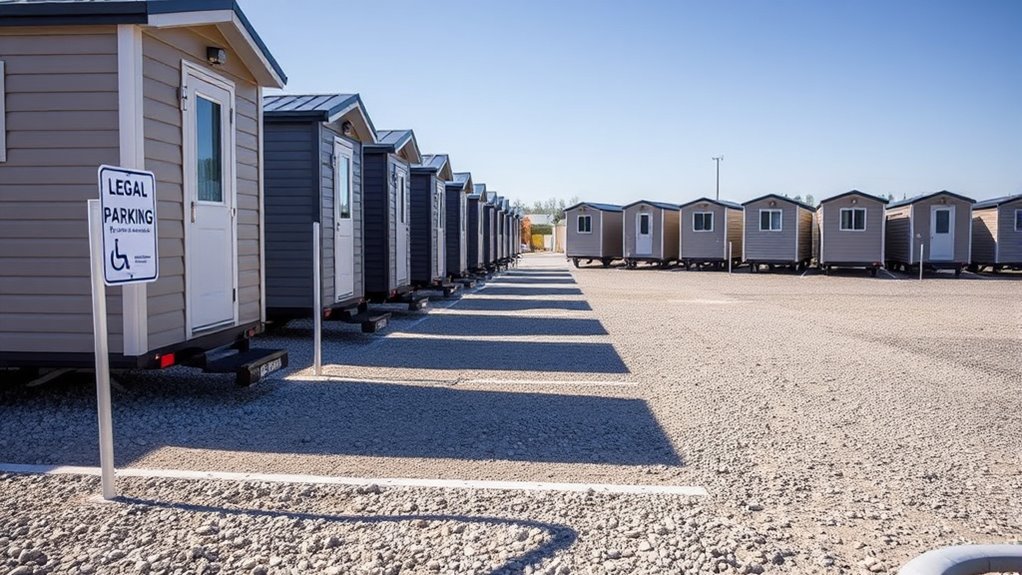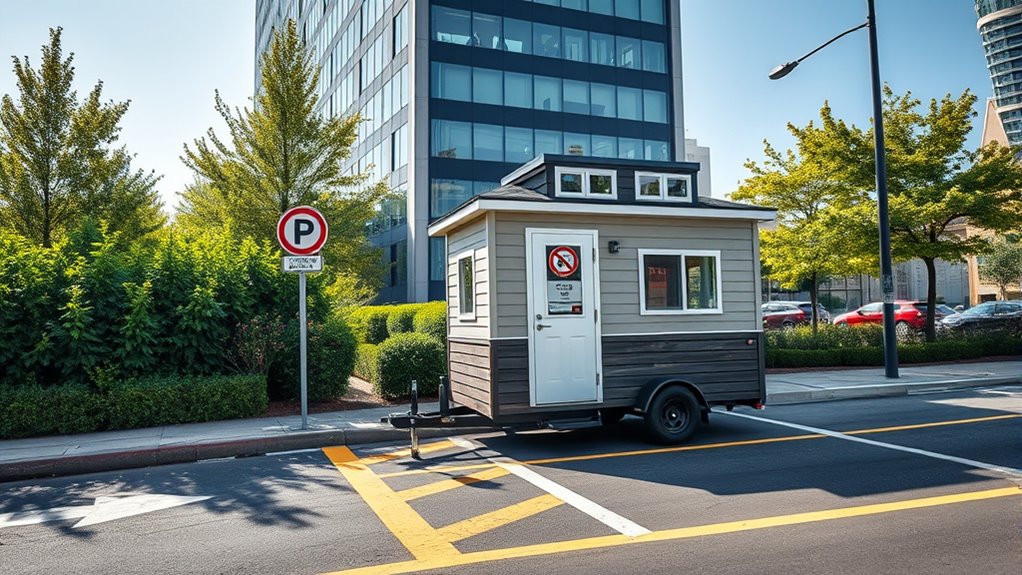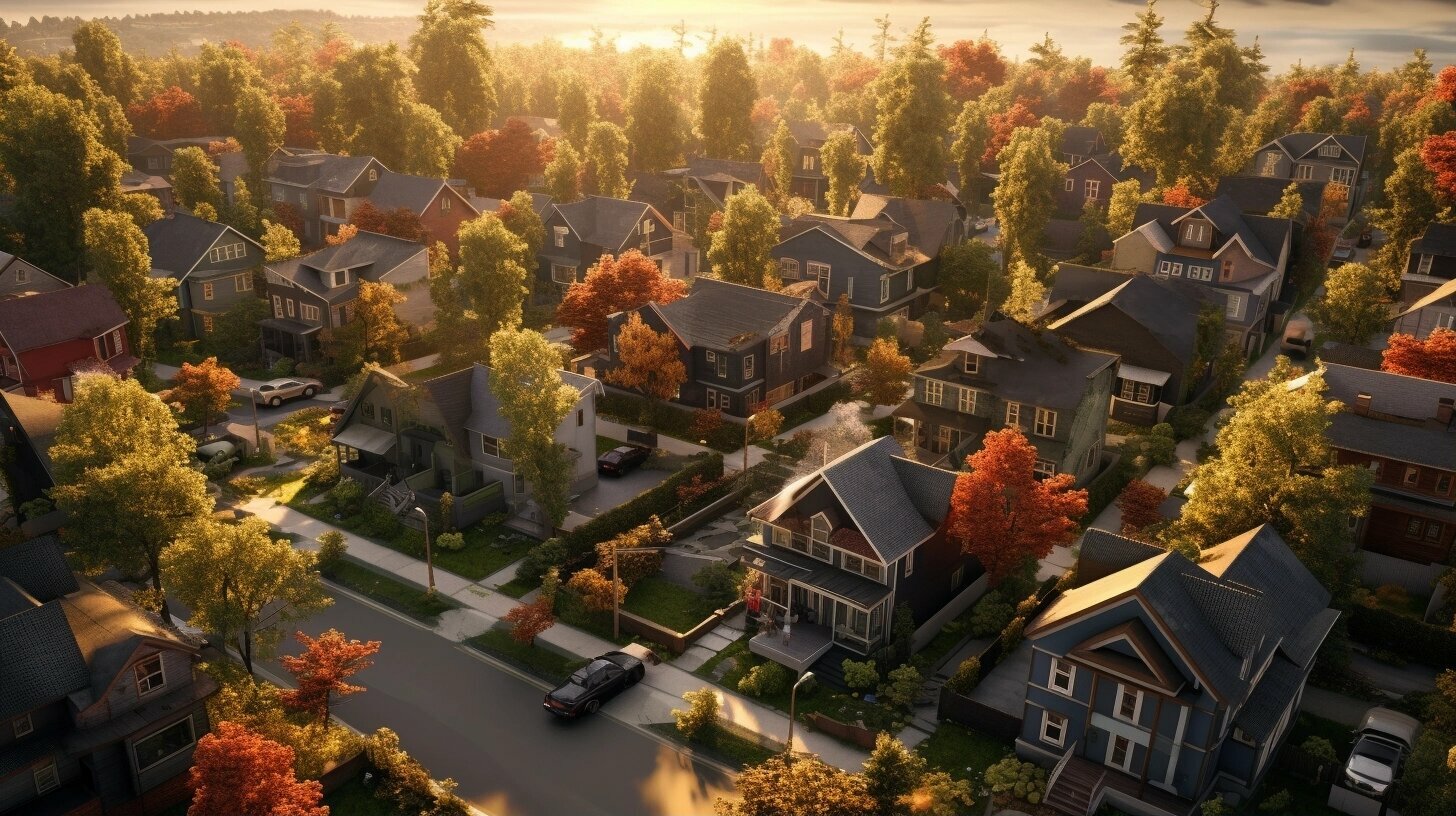To legally park your tiny house, you need to check local zoning laws to see where it’s allowed—such as residential lots, RV parks, or standalone sites—and obtain any necessary driveway permits. Ensuring your tiny house meets safety standards and adheres to established guidelines can prevent legal issues. It’s also important to take into account build codes, setbacks, and utility requirements. Continuing further will provide more detailed steps to make sure you’re fully compliant and avoid potential problems.
Key Takeaways
- Verify local zoning laws to identify permissible parking locations for tiny houses.
- Obtain necessary driveway permits from city or county authorities before parking.
- Ensure compliance with vetted standards for safety, utility connections, and structural requirements.
- Research additional regulations like building codes, setbacks, and occupancy rules applicable to the area.
- Maintain legal compliance to avoid fines, penalties, and legal disputes related to tiny house parking.

Parking a tiny house isn’t as simple as finding any open space; you need to understand the legal requirements that vary by location. One of the first hurdles you’ll encounter involves zoning restrictions. These rules determine where you can legally park or place your tiny home. Zoning laws are established to control land use and guarantee safety, so they often specify whether tiny houses are allowed on residential lots, in mobile home parks, or as standalone structures. Some areas classify tiny houses as permanent dwellings, while others see them as RVs or temporary structures, which impacts where you can park. Before you start looking for a spot, you should check with local zoning offices or review city ordinances to confirm if your intended location is zoned for tiny house parking. Ignoring these restrictions can lead to fines, forced removal, or legal complications, so understanding the zoning landscape is vital.
Another key aspect involves driveway permits, which are often necessary before parking your tiny house on a private property or even certain public areas. Driveway permits are issued by city or county authorities and guarantee that your access point meets safety standards, such as proper width, slope, and visibility. If you plan to park your tiny house on private land, you’ll typically need to obtain a driveway permit to connect your property to the road legally. This process usually involves submitting a plan and paying a fee, and sometimes inspections are required to verify compliance. Without a permit, your driveway might be considered an illegal access point, leading to penalties or the requirement to remove your tiny house. Securing a driveway permit not only keeps you compliant but also helps prevent disputes with neighbors or local authorities.
Additionally, understanding the vetted standards for tiny house parking can help ensure your setup meets safety and legal requirements, reducing the risk of future issues.
In addition to zoning restrictions and driveway permits, you should also consider other regulations like building codes, setbacks, and utility connections. These requirements can influence where and how you park your tiny house, especially if you plan to live in it full-time. Some locations might have restrictions on the size or foundation type of tiny homes, while others might require inspections or certificates of occupancy. Always research thoroughly and consult with local officials before parking your tiny house to guarantee you’re meeting all legal obligations. Doing so will save you from potential legal headaches and help you enjoy your tiny home lifestyle without unnecessary obstacles.
Frequently Asked Questions
Can I Park My Tiny House on Public Streets Legally?
You generally can’t park your tiny house on public streets legally due to parking enforcement and regulations. Tiny house mobility means you can move it easily, but parking on streets may violate local laws. Check with city or county authorities first, as most areas restrict long-term parking or storage of tiny houses on public property. Staying informed helps you avoid fines and guarantees your tiny house remains compliant with parking laws.
Are There Specific Permits Required for Tiny House Parking?
Yes, you typically need tiny house permits to park legally, depending on your location. Parking regulations vary by city or county, so you should check local ordinances to see if specific permits are required. Some areas mandate special zoning or parking permits for tiny houses, especially if you’re parking on private property or in designated areas. Always verify these requirements beforehand to avoid fines or legal issues.
How Do Zoning Laws Affect Tiny House Parking Options?
Zoning laws are the compass guiding your tiny house parking options, shaping where you can settle. Zoning restrictions and parking ordinances act like invisible fences, limiting or permitting parking in certain areas. You might find some neighborhoods welcoming tiny houses, while others have strict rules. To avoid surprises, check local zoning regulations first. Understanding these laws helps you navigate your options smoothly, ensuring your tiny house finds a legal and safe place to rest.
Can I Park My Tiny House on Private Property Without Restrictions?
You can park your tiny house on private property without restrictions if it’s portable and meets local regulations. Make sure your tiny house’s portability allows easy relocation, and check if you need parking permits or zoning clearances from your city or county. Some areas may have restrictions, so always verify with local authorities to avoid fines or issues. Proper planning guarantees your tiny house stays compliant and hassle-free on private property.
What Are the Fire Safety Regulations for Tiny House Parking?
Think of fire safety regulations as the guardian of your tiny house haven. You must guarantee proper clearance from flammable materials and install working smoke and carbon monoxide detectors. Parking regulations often require a safe distance from property lines and fire hydrants. By following these fire safety guidelines, you protect your home and community, turning your tiny house into a secure retreat rather than a risky ember waiting to ignite.
Conclusion
Finding tiny house parking rules can feel like trying to find your way through a maze. But by understanding local regulations and securing the right permits, you’ll clear the path smoothly. Think of it as planting a sturdy seed—you’re setting the foundation for your tiny home journey. Stay informed, stay compliant, and enjoy your tiny house adventure as effortlessly as a boat sailing on calm waters. Your perfect parking spot is within reach!









